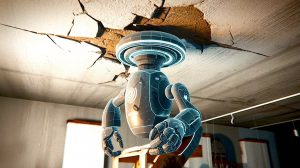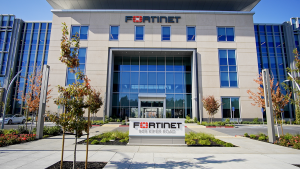Self-healing servers a trending goal for Modern IT
This week’s Smart Infrastructure roundup features the newest predictions for data centers of the future, real-time data center monitoring, and a self-healing smart beads to protect data centers.
![]()
Data centers will be smaller in the future
.
A recent report by Emerson Network Power details the major shift expected for mid-size data center management in the coming years. The report, based on an Emerson Network Power survey, projects that as more data is produced by connected devices, small data centers will be embedded in neighborhood settings by 2025 and two-thirds of telecom companies will rely on colocation facilities.
Fifty-eight percent of survey respondents stated that they expect data centers to be half the size of current facilities, or even smaller by 2025, to offset traffic load transitioning to both hyperscale and small scale network locations.
The survey also revealed that data centers of the future will rely on alternative fuels, specifically renewable energy such as solar, natural gas, and wind. Survey respondents believe that in the future, data centers will have self-healing and predictive maintenance capabilities so conflict resolution can be done remotely, and two-thirds of data computing will be done in the cloud.
Real-time data center monitoring
.
Mestex, a company that specializes in evaporating cooling systems, is providing a free tool to demonstrate how infrastructure can be better deployed to manage competing demands for more capacity and greater energy efficiency as the digital revolution continues to flood data centers with huge amounts of data.
“Data centers are the enablers of this digital revolution,” said Mike Kaler, president of Mestex. “The increase in global digital demand and cloud computing is exponential. As demand rises, data centers that house digital information consume more electricity, half of it being used to cool the facility. We wanted to help people see how energy is being consumed and ways for managing infrastructure and costs.”
Mestex believes that adding plug-and-play cooling units can combine intelligent technology with flexible, scalable and energy-saving approach. Mestex’s Aztec Evaporative Cooling Units offer an economical strategy for data centers to manage expansion while reducing total cost of ownership. The Aztec systems are reported to lower power usage by 70 percent when compared to traditional air conditioning, and when its digital controls are integrated with other building automation systems, a company can save even more.
To get a realistic view of a cost-effective way of expanding data centers, the company launched the Mestex Open Access Project to provide information technologists, facility managers and financial executives the ability to evaluate energy-saving concepts in a real-world environment.
If you’re interested in accessing the project, go to Mestex Open Access Project Live View and input “guest” in the username and password fields.
Self-healing smart beads to protect data centers
.
Some data centers have gone green, which could mean they are built in regions with colder climates so they can draw cool air to keep hardware from overheating. The problem with this is that the cool air being drawn from the environment contains contaminants that could do more harm for the equipment and result in frequent downtimes for servers. One can argue that air drawn from the environment can be filtered to minimize contaminants that could damage valuable hardware, but if that doesn’t work well enough, what are facility managers’ other options?
Scientists at Battelle have developed a self-healing smart bead that can help solve problems in hardware corrosion at an early stage, even before it is visible to the naked eye.
The Battelle Smart Corrosion Detector bead is able to detect corrosion as well as deliver a payload to heal microscopic cracks brought about by rusts.
The smart beads look like a fine, whitish powder that can be mixed with coatings used on critical infrastructure that are vulnerable to corrosion. It detects and reveals corrosion forming on metal before it becomes visible to the naked eye and once activated, the beads release a proprietary chemical that fills the crack. Using a special light, the beads fluoresce when activated. The beads serve as an early indicator of corrosion and help facility managers mitigate the underlying problem, while the smart beads repair and stem the onset of corrosion.
“This technology can not only address a major issue associated with protecting existing infrastructure in harsh or corrosive environments, but it can also improve the safety and reliability of new infrastructure as its installed,” said Ram Lalgudi, a principal research scientist at Battelle.
Lalgudi, together with his Battelle colleagues Kelly Jenkins, John Stropki and Wes Childers, began working on this application of nanotechnology nearly a decade ago, and added that they are now seeking collaborators to help take the product to market.
photo credit: BobMical via photopin cc
A message from John Furrier, co-founder of SiliconANGLE:
Your vote of support is important to us and it helps us keep the content FREE.
One click below supports our mission to provide free, deep, and relevant content.
Join our community on YouTube
Join the community that includes more than 15,000 #CubeAlumni experts, including Amazon.com CEO Andy Jassy, Dell Technologies founder and CEO Michael Dell, Intel CEO Pat Gelsinger, and many more luminaries and experts.
THANK YOU





















